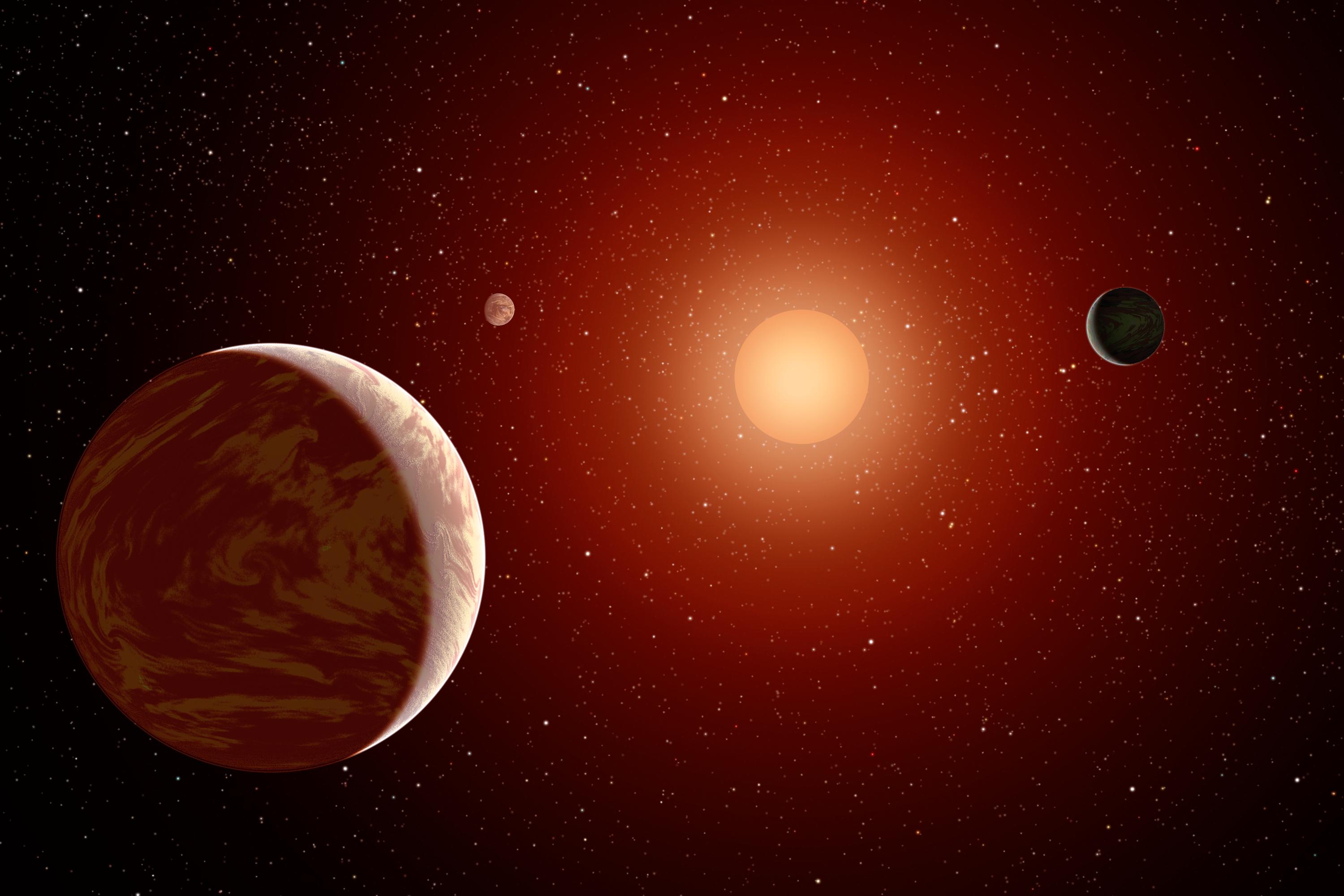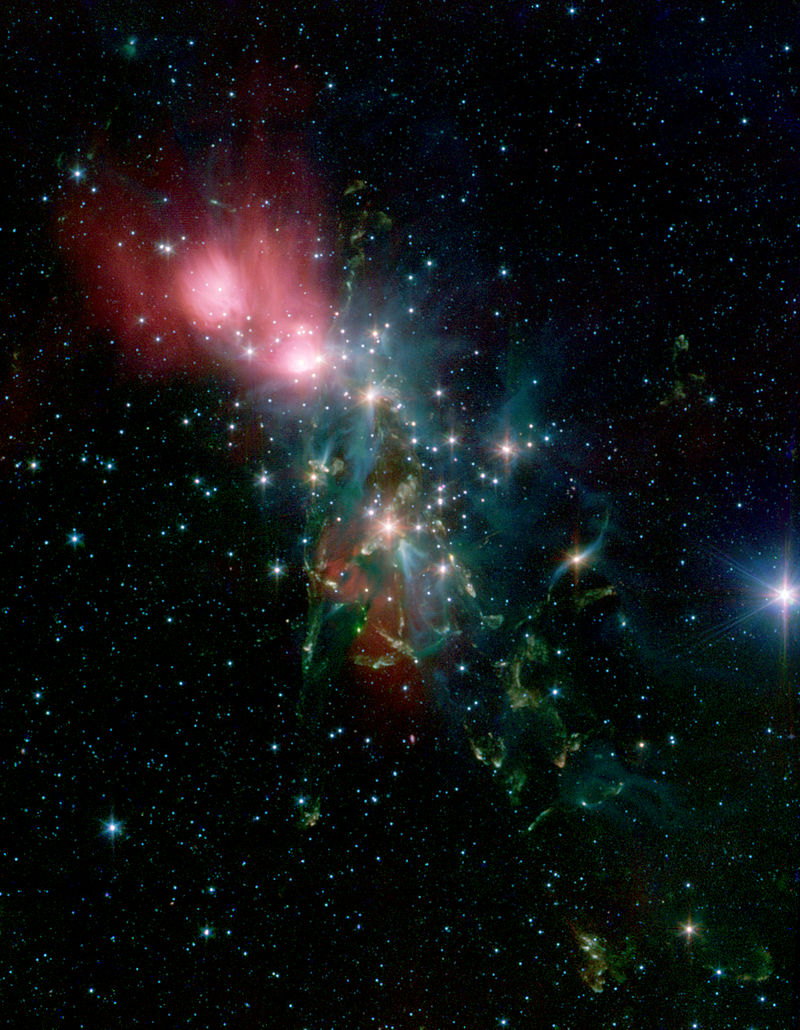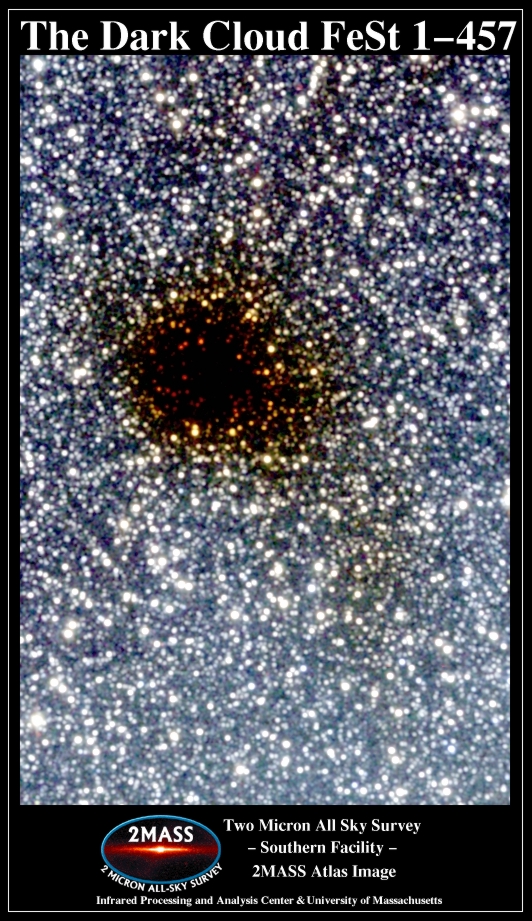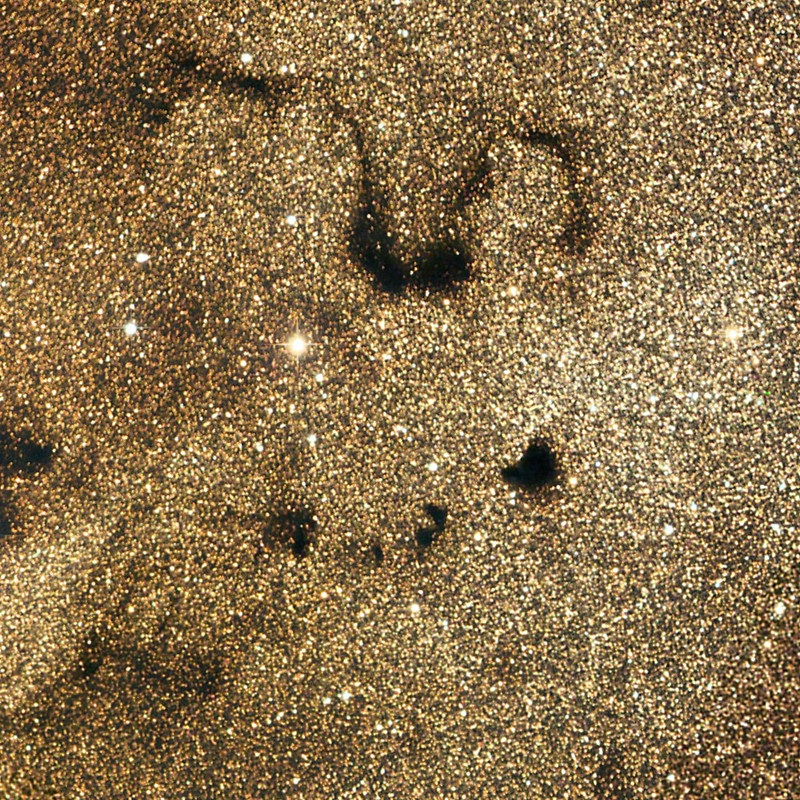MarkBour wrote: ↑Mon Jan 30, 2023 1:47 am
VictorBorun wrote: ↑Sun Jan 29, 2023 2:21 pm
Ann wrote: ↑Sun Jan 29, 2023 5:52 am
Don't know about you, but Barnard 68 looks like a puny little molecular cloud to me. What stars can be born from it?
Ann
Do I get it right: we think Barnard 68 is no farther than 500 ly away and no less than 2 solar masses because we do not happen to see any star in front of it.
As far as we know Barnard 68 can be closer and smaller.
Like The Black Cloud by Fred Hoyle, 1957
From what we can see, it has to be closer than almost all of the stars in the image. Statistically, if it were farther than any more than 1-2%, there is just
no way it would be completely devoid of an intervening star or two. And it is certainly closer than the stars that can be observed through it in infrared. So, that should put an upper limit on its distance. Several articles I browsed today happily pointed out roughly this reasoning.
But whether it could be smaller and closer is a great question!
Gaia has taken data from the region, and of course all it finds for this is that there are no stars to plot there. (Evidently the Gaia mission data is using an instrument that can capture between near-UV and near-IR, so it does not look like it will measure any obscured stars that are behind the cloud.) Still, at these distances, parallax measurement will be useful for distance computation. If Barnard 68 were only 100 ly from us, for example, it would have quite a parallax motion, changing which stars it obscured at its edges.
Frustratingly, most articles I've looked at today seem to have smugly placed its distance at 500 ly, without ever giving any reference evidence that would deny a smaller distance calculation. At visible wavelengths, as is clear in the posted image for today, many stars near its edge are dimmed, presumably by the cloud material which is less at the edge of the cloud. Parallax motion should show them at least changing in brightness, if not completely disappearing/appearing as a result of our local motion. From all of the authoritative claims about its distance, one gets the impression that somebody has looked at the data and done this. But I can't find a citation for any such work.
Here's a notice in the Royal Astronomical Society of a technique that is being used on nearby Bok globules:
Distance estimation of some selected small Bok globules by A. Das, H. S. Das, A. Senorita Devi
Kudos to their creative technique, it does not need to wait for parallax data to be built up to give an estimate within about +/-20%.
Mark, let me present an argument that Barnard 68 is probably at a distance of ~500 light-years, using pictures of nebulas and Hipparcos and Gaia parallaxes of stars to make my case.
Let me begin with a picture:
So Barnard 68 is located very close to the Snake Nebula. Yes, but Barnard 68 (and the Snake Nebula) are located in an area in Ophiuchus that is chock full of dust structures, including the large Pipe Nebula and a long dust lane leading straight up to the Antares/Rho Ophiuchi cloud complex:
Barnard 68 among many dust structures in Ophiuchus.
Credit: Naoyuki Kurita
As you can see, there is a huge number of large and small dust clouds in the vicinity of Barnard 68. One of them is the very large Pipe Nebula, and another is a very long structure leading up to the Antares/Rho Ophiuchi cloud complex. I argue that there can be no doubt that the dust lane leading up to the Antares/Rho Ophiuchi complex must be a remnant of the same nebula that gave birth to Antares, Rho Ophiuchi and many other stars in this colorful cloud complex.
Very many of the stars in the Antares/Rho Ophiuchi cloud complex are too bright for Gaia to measure their parallaxes, but a quick search turned up two whose parallaxes had been measured by Gaia: HD 147196, with a Gaia parallax of 7.2448 milliarcseconds (with an uncertainty of 0.0265 mas), and HD 146706, with a Gaia parallax of 7.0808 ± 0.0504 mas. Disregarding the uncertainties, these parallaxes put the two stars at 450 and 460 light-years.
I want to draw your attention to another star, Theta Ophiuchi, a hot blue star of spectral class B2IV. Even though this is not a blisteringly hot star of spectral class O, I argue that it is still hot enough, and it blows a sufficiently strong stellar wind, to strongly affect the dust structures around it. For example, I argue that the rounded shape of the Pipe Nebula could very well be a result of Theta Oph blowing the dust and gas of the Pipe Nebula away from it.
I also argue that the Pipe Nebula and the long dust structure leading up to the Antares/Rho Ophiuchi complex are connected. I can't prove it, but it seems very likely to me. This in turn leads me to conclude that most (if not all) of the dust structures inside the large arc formed by the Pipe Nebula and the dust lane feeding the Antares/Rho Ophiuchi complex are part of the same huge (if fractured) dust complex. And if so, they should be at more or less the same distance from us.
I argue that Theta Ophiuchi is a key player in this dust structure. I believe that this star was born from this dust, so that it should be at more or less the same distance as the dust clouds. Moreover, I argue that Theta Ophiuchi is very similar to the bright blue stars of the Antares/Rho Ophiuchi complex, so that it was born at more or less the same time and with a similar mass as the bright blue stars of upper Scorpius. So how far is Theta Ophiuchi? Unfortunately, Theta Oph is too bright for Gaia to measure its parallax, but Hipparcos puts it at 7.48 ± 0.17 mas, which corresponds to 436 light-years.
To summarize: I argue that the numerous scattered dust structures in Ophiuchus, including Barnard 68, are remnants of a major starforming event that took place some - oh, 15 million years ago? - and which are all located some 400-500 light-years away from us.
It is of course possible that Barnard 68 is a foreground or a background object that has nothing to do with all the other dust clouds around it. But Occam's Razor says that we should assume that Barnard 68 is located at more or less the same distance as all the other dust structures around it, unless we have good reasons to believe otherwise.
Ann
 Barnard 68: Dark Molecular Cloud
Barnard 68: Dark Molecular Cloud





